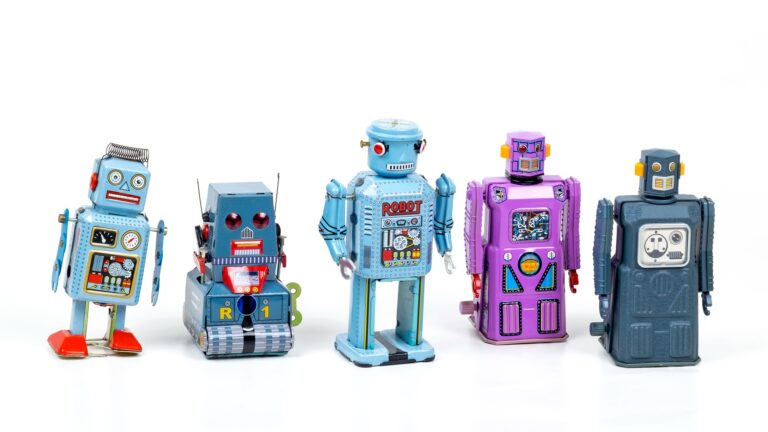Disruptive has become an overused word. Back in a June 2014 article in New York magazine Kevin Roose said, “Let’s all stop saying ‘disrupt’ right this instant.” For years now, every where you turned you heard about disruptive technology. And it has bled into the vernacular of other disciplines and industries as well. Roose declares in his article that disruption does not equal innovation.
Jay Levinson, Bill Gallagher, and Orvel Wilson wrote “Guerrilla Selling: Unconventional Weapons and Tactics for Increasing Your Sales” back in 1992. The Guerrilla franchise included Guerrilla Marketing, Guerrilla Publicity, Guerrilla Publicity, Guerrilla Negotiating, and Guerrilla Advertising just to name a few. The franchise was viewed as groundbreaking resources for finding insider secrets, expert advice, and valuable tips for a dozen different business functions.
By the mid-nineties, the guerrillas had morphed into disruptors. The concept of disruptive innovation was introduced by Clayton Christensen and his collaborators in a 1995 article titled “Disruptive Technologies: Catching the Wave”. Published in the Harvard Business Review, Christensen and his co-author Joseph Bower explored how companies should prepare for the customers of tomorrow. Christensen and Bower made the point that businesses fail to stay on top of technology and market changes. This leads to opportunities for innovators to disrupt the market dominance of stagnant non-responsive companies. They discuss the impact to storied companies like Goodyear by Firestone, Xerox by Cannon, Sears by Walmart, and others.
There are more recent examples where innovation has lead disruption. The disruption caused by Napster to A&M Records’ business model back in 2001 has changed forever how music will be delivered. As recently as 2009 when Uber’s entry into the taxi industry started gutting ridership crushing the taxi industry.
One could easily conclude that disruption, innovative or not, is not pretty and may result in casualties that include damaged corporations and sullied reputations along the way. Michael Corleone in The Godfather (1972) famously said “It’s not personal, it’s strictly business.”
When it comes to sales, Mark Hunter in his undated article “Disruptive Selling” said “Remember, the underlying sales principle of disruptive selling is that success in sales comes not to those who do things the way everyone else does but rather are willing to step out and do things differently.”
So, what constitutes disruptive selling if disruption is not innovation?
- An innovative call script?
- An innovative email?
- An innovative social message?
- An innovative use of personalization?
- An innovative use of technology (CRM, SEP, etc.)?
Strategy, tactic, or trick, none of these innovative ideas are innovative at all. Salespeople do the same thing repeatedly. Old call scripts become new again. Email messaging is reused over and over. While salespeople may do the same thing many times, they do not do them the same way each time. Salespeople are human and prone deliver messaging with various degrees of accuracy.
Sometimes salespeople throw the script out, adlib their pitch, and hope for the best. This creates inefficiency and unexpected outcomes in the sales process. There is nothing new about Customer Relationship Management systems (CRMs) or Sales Enablement Platforms (SEPs). They have been around for the last twenty years. CRMs and SEPs can put guard rails in place to encourage salespeople to stay the course. But it has already be said, salespeople are human. Sales pipelines become clogged with opportunities that are sketchy at best and hollow at worst. Closed sales are therefore unpredictable.
Along come agile organizations that are exceptionally good at changing product and market strategies extremely quickly. Sellers in these organizations can take a radically different approaches to selling competitive offerings in whatever market they are targeting, from evolving to mature. Rather than offering customers just a different solution to the same problem, disruptive salespeople create a vision of an unanticipated outcome. Disruptive sellers are looking to use sales tactics and strategies that are as innovative as the product and service solutions they are offering.
Disruptive sellers look for ways to overcome a prospect’s belief that they do not have a problem, or the problem is not serious enough to do anything about. Disruptive sellers look for ways to overcome a prospect’s confusion resulting from too much information and too many technical terms. Disruptive sellers look to overcome the lack of trust in the product, the service, or the salesperson. Disruptive sellers look for ways to overcome the pace of traditional sales processes. Disruptive sellers create excitement and immediate interest in the company’s products and services and bring clarity to the prospect’s decision process. Disruptive sellers translate value proposed into value achieved. This results in accelerating sales cycle and in more closed sales sooner. Since disruptive selling goes against expectations and cuts through the noise, the competition will not even know what has happened.
In a Forbes article from March 2021 Pradeep Aradhya writes “What to Do About the Sales Disruption That Is Coming”. He discusses the possibility that many seller roles will be filled by sales bots. In customer service, chat bots (or service bots) are already widely used. It has become difficult to distinguish between these service bots and live customer service agents. It has become so difficult to tell the difference between automated and human interactions that in one research study 38% of those surveyed participations were uncertain whether they had chatted with a human or a machine.
The success of service bots has opened the door for sales bots. While chatbots have revolutionized the customer service department in many ways, they have fallen short in others. They often lack the emphatic touch of a human. Despite their failings and mixed marketplace acceptance over the last decade, bots of all kinds are here and here to stay. They have become ubiquitous. We now engage regularly with bots of all kinds of circumstances, from the bots found on online to those found on our smart phones.
What would it mean to have a dedicated seller for every prospect or customer no matter what product or service they are interested in, where they are located around the globe, or what language they might speak? Systems can readily be constructed to contain all the necessary sales data, engagement and interaction data, and competitor information that is needed. In many cases it is already there, from credit scores to demographic information, from Customer Lifetime Value (CLV) scores to personalized Net Promoter Scores (NPS). Imagine sales bots that know all this data. Now couple that with an arsenal of closing techniques, from the assumptive close to the Columbo close. Sales bots that are single-minded and working only towards the goal of closed sales could alienate prospective customers; are you ready to buy, are you ready to buy now, how about now? They will have to operate on innovative sales models rather than an outdated “always be closing” model that is likely to feel particularly cringy in early sales bot implementations.
Enter Conversational Commerce (CC). Conversational Commerce, sometimes called chat commerce or conversational marketing, is an omnichannel approach wherein a company utilizes synthesized voice and text based conversational Artificial Intelligence (AI) to sell its products and services directly to buyers. Often encountered in the form of chat or messenger apps, the goal is to guide the prospect through the buying process, advancing them along the sales funnel, and achieving a closed sale. By engaging with the prospects in numerous ways, conversational commerce bots can engage with buyers at any step in the purchase process. Conversational Commerce bots can create awareness, encourage consideration of alternatives, drive decision-making, and increase retention after the sale. All with the goal of increased sales, increased customer satisfaction, and increased revenue.
In an April 2019 Forbes article by Michael Solomon titled “A.I.: The Death Knell for Relationship Marketing, Or the Birth of The Loveable Salesbot?” he notes that companies like H&M are already diving deep into the area of conversational commerce. Add a human-like form and you have what is called Persuasive Robotics engaging in Conversational Commerce techniques. There are already socially capable humanoid robots that employ technics to change hearts and minds. They have been designed to do one thing: convince us of something. It will soon be impossible to tell the difference between real human sellers and their AI counterparts. At the intersection of deepfake technology and holograms it will soon be impossible for the average untrained person to tell the difference between human and sentient robotic AI sellers when using video technology.
It is already problematic for Google and one of their engineers, they disagree if LaMDA is sentient. LaMDA is Google’s breakthrough conversation technology. The acronym stands for Language Model for Dialogue Applications. Decades before LaMDA the discussion on sentient machines started with ELIZA from the early 1960s. ELIZA was a primitive chatterbot (the origin of the now shortened and more commonly used phrase: chatbot). ELIZA emulated a psychotherapist and was considered an early test case for the Turing Test. The Turing Test named after Alan Turing, the famed English mathematician and crypto analyst, is a test of a machine’s ability to exhibit intelligent behavior indistinguishable from that of a human. ELIZA used primitive pattern matching and substitution methodologies which gave those that interacted with the program the uncanny feeling they were conversing with a real doctor, someone who understood them. LaMDA might have access to an estimated 10 Exabytes of data and an estimated three trillion searches per year. These are conservative estimates of the scope and nature of what Google knows about what we want to know and the best places we go to get the answers.
The Three Laws of Robotics were introduced in Isaac Asimov 1942 short story “Runaround” with the first law stating that robots may not injure humans or allow humans to come to harm. In the 1968 movie “2001: A Space Odyssey” HAL refuses to obey an order and says “I’m sorry Dave. I’m afraid I can’t do that.” This terrifying exchange between Dave Bowman and HAL 9000 illustrates that Asimov’s Laws when broken have consequences. Heuristic ALgorithms (for which HAL is named) are designed to solve problems quickly are used in artificial intelligence solutions. Algorithms solve problems by following specific steps while heuristics solve problems using general guidance (sometimes called rules for thumb) and trial and error. The HAL 9000 computer was a blend of the two approaches along with a dash of malice albeit some claim evil and may or may not have followed those fictional rules of robotics. Those laws have continued to be debated for more than 80 years.
By analyzing thousands upon thousands of recorded sales calls between real live sellers and their prospects, it is now terrifyingly possible for programs like LaMDA to replace salespersons and soon, sentient or not. That analysis is likely to yield just the right thing for the sales bot to say at just the right time in the conversation to maximize the likelihood that a prospect will purchase the offered product or service at the best price which might be higher or lower depending on prevailing market conditions at the time of engagement. An unexpected outcome might be that buyers scored with a negative sentiment about the product or service might be offered a purchase price lower than another buyer. Buyers with positive sentiments might end up paying more for the same product and service. This could be perceived as an unexpected consequence or ideal outcome. This leaves conversational commerce sales bots to have socially meaningful and persuasive exchanges with prospects and customers negotiating the best price and terms. Sales bots will rival live commerce in today’s digitally connected economy, from chatbots to digital voice assistance.
Disruptive selling involves experiments that challenge us to move beyond the status quo. Disruptive sellers, human and robotic, are using new tactics that have not been tried before. Some will work and others will fail. This is ok because this is how innovation works. If you want to evaluate alternative value propositions it can be difficult for humans to alternate between the two (let alone several) alternatives, but it would be simple for your conversational enabled sales bot to do so. You could leave it to your live sellers and hope for the best or you can direct your selling bots to deliver different alternatives in such a way that you could measure success. Conversational marketing companies are already making it easy to personalize conversations via chat, email, or video and engage with every prospect on their terms.
Disruptive sellers will need take time to listen to what prospects are saying. They will need to listen for the frustration, confusion, and excitement. And explore solutions together, even if those solutions do not include their product or service. They will need to remember it is about helping first before selling. If disruptive sellers do not understand the prospect’s problem, how will they know if and how they can help them? And that is something that will be exceedingly difficult for even the most sentient of conversational commerce robot salespersons to do.
About the Author
Stephen Howell is a multifaceted expert with a wealth of experience in technology, business management, and development. He is the innovative mind behind the cutting-edge AI powered Kognetiks Chatbot for WordPress plugin. Utilizing the robust capabilities of OpenAI’s API, this conversational chatbot can dramatically enhance your website’s user engagement. Visit Kognetiks Chatbot for WordPress to explore how to elevate your visitors’ experience, and stay connected with his latest advancements and offerings in the WordPress community.



Leave a Reply
You must be logged in to post a comment.